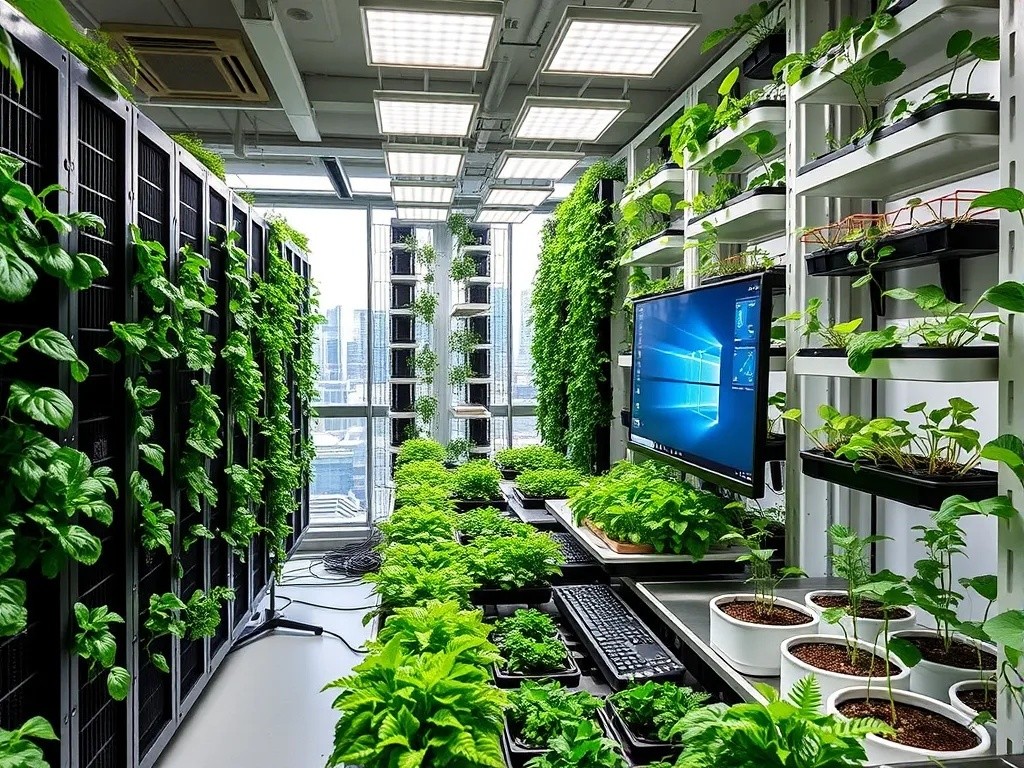In recent years, there has been a significant advancement in the field of Artificial Intelligence (AI) and Augmented Reality (AR). These technologies have become increasingly popular and have the potential to enhance virtual experiences in various fields such as gaming, education, healthcare, and...
Computer Program Grows Food in Vertical Farms Inside Apartment Buildings

Urban agriculture is experiencing a technological revolution that brings fresh produce directly to city dwellers. A groundbreaking computer program is now enabling apartment buildings to house fully automated vertical farms, transforming unused spaces into productive food-growing environments. This innovation addresses food security concerns while reducing the environmental impact of traditional agriculture.
How the Technology Works
The sophisticated software system monitors and controls every aspect of plant growth within vertical farming installations. Using a network of sensors, the program continuously tracks environmental conditions including temperature, humidity, light exposure, and nutrient levels. This data-driven approach ensures optimal growing conditions for each specific crop variety.
Automated Environmental Control
The computer program adjusts LED lighting systems to provide the exact wavelengths and intensity required for photosynthesis at different growth stages. It regulates climate control systems to maintain ideal temperature ranges, typically between 65 and 75 degrees Fahrenheit, while managing humidity levels that prevent disease and promote healthy plant development.
Precision Nutrient Delivery
Through hydroponic or aeroponic systems, the software delivers perfectly balanced nutrient solutions directly to plant roots. The program calculates precise quantities of nitrogen, phosphorus, potassium, and micronutrients based on plant species, growth stage, and real-time sensor feedback. This precision eliminates waste and maximizes crop yields.
Benefits for Urban Residents
Apartment dwellers gain access to fresh, locally grown produce without leaving their buildings. The system grows leafy greens, herbs, tomatoes, peppers, and strawberries with consistent quality throughout the year. Residents can harvest vegetables at peak freshness, significantly improving nutritional value compared to store-bought alternatives that travel long distances.
Economic Advantages
- Reduced grocery costs for participating residents
- Lower transportation expenses for food distribution
- Increased property values for buildings with farming systems
- Potential revenue generation through surplus produce sales

Environmental Impact
Vertical farms in apartment buildings dramatically reduce the carbon footprint associated with food production and distribution. The software optimizes water usage, recycling up to 95 percent of water compared to traditional farming methods. This efficiency proves particularly valuable in water-scarce regions.
Sustainability Features
The computer program minimizes energy consumption by scheduling intensive operations during off-peak electricity hours. Solar panels integrated with building infrastructure can power these systems, further reducing environmental impact. The absence of pesticides and herbicides creates healthier produce while protecting local ecosystems.
Implementation Challenges
Despite numerous advantages, several obstacles must be addressed for widespread adoption. Initial installation costs remain substantial, requiring investment in specialized equipment, structural modifications, and software licensing. Building owners must evaluate space availability, typically utilizing rooftops, basements, or converted common areas.
Technical Requirements
Successful implementation demands reliable internet connectivity for remote monitoring and updates. Buildings need adequate electrical infrastructure to support LED lighting arrays and climate control systems. Maintenance protocols require trained personnel or partnerships with agricultural technology companies.
Future Developments
Ongoing advancements in artificial intelligence are enhancing the software's capabilities. Machine learning algorithms analyze crop performance data to continuously improve growing protocols. Future versions may incorporate predictive analytics to anticipate maintenance needs and optimize planting schedules based on resident consumption patterns.
Expansion Possibilities
Developers are exploring integration with smart home systems, allowing residents to monitor farm operations through mobile applications. Community engagement features could enable collaborative decision-making about crop selection and harvest scheduling. Educational programs might transform these farms into learning laboratories for children and adults interested in sustainable agriculture.
Conclusion
Computer-controlled vertical farms represent a promising solution to urban food challenges. By converting apartment buildings into productive agricultural spaces, this technology reconnects city residents with food production while promoting environmental sustainability. As costs decrease and technology improves, these systems may become standard features in residential developments worldwide, fundamentally changing how urban populations access fresh, nutritious food.



